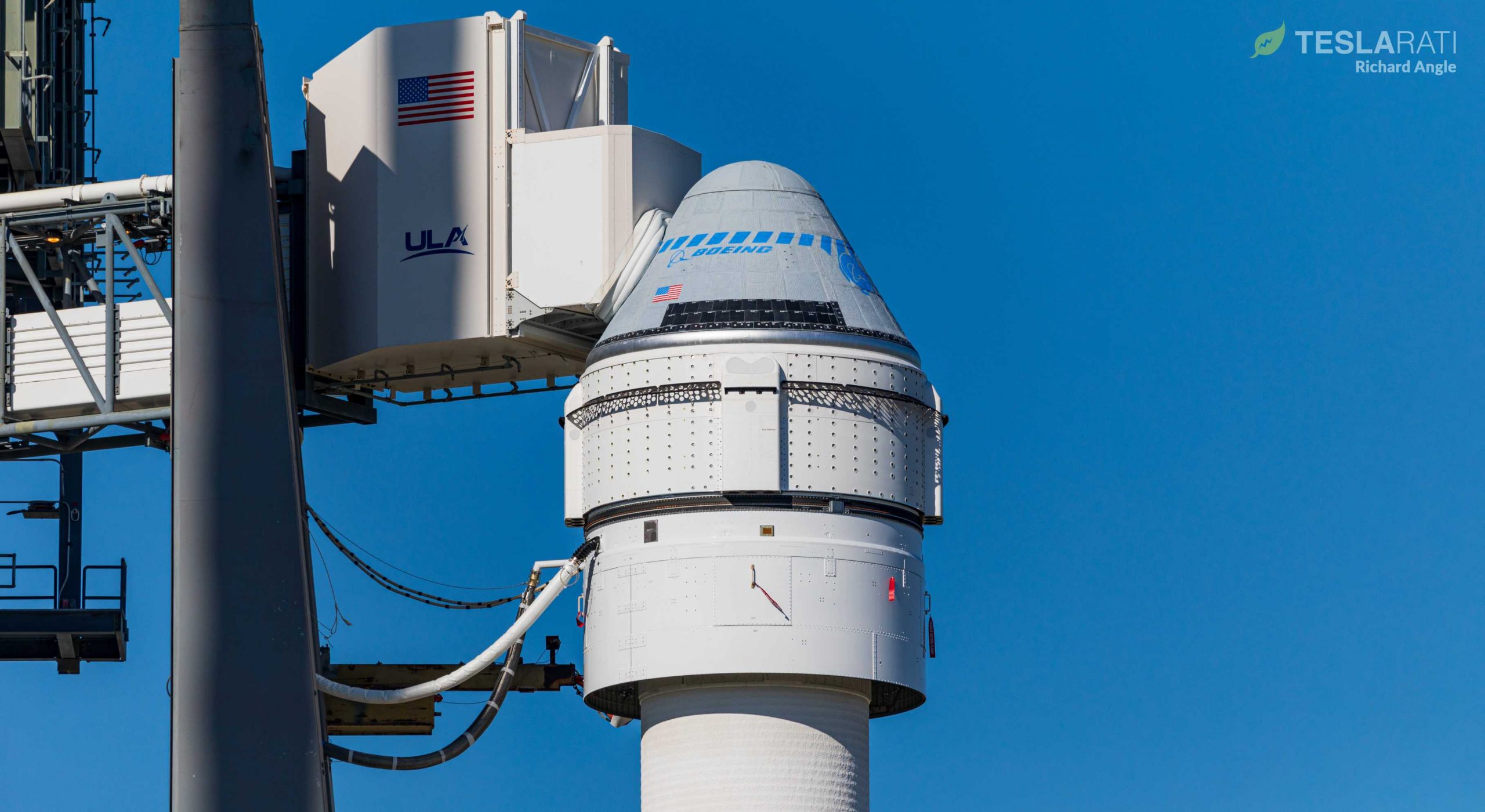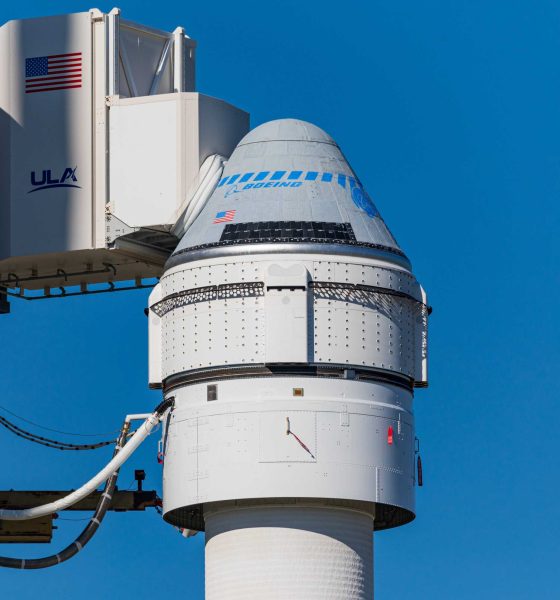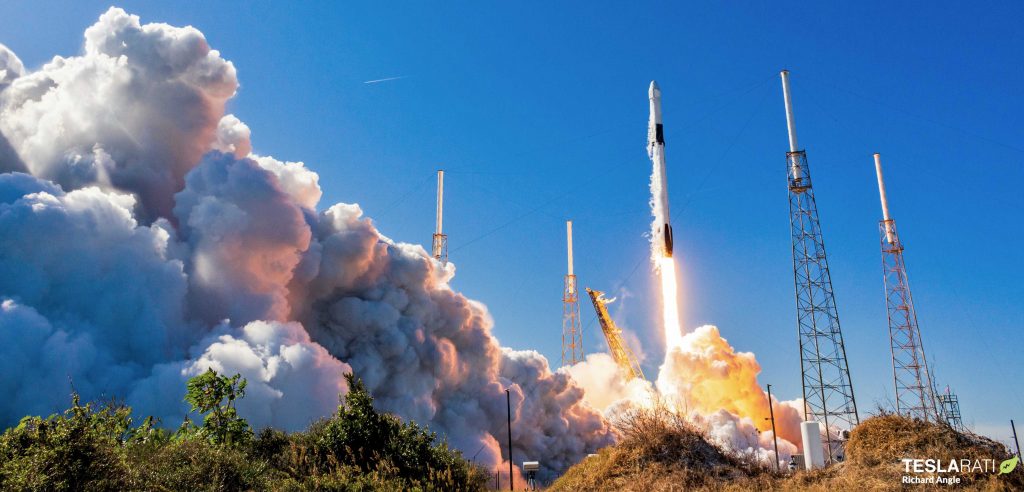

News
SpaceX and Boeing's crewed capsule race heats up with Starliner's Friday test flight
The first week of December kicked off a flurry of productivity for NASA Commercial Crew Program partners SpaceX and Boeing. Ahead of crewed astronaut flight in 2020, both partners are working toward the completion of integral test flights of the two crew capsules that will carry astronauts to orbit from American soil for the first time since 2011.
While SpaceX nailed down a firm targeted launch date for the upcoming in-flight abort (IFA) test of its Crew Dragon capsule, Boeing and launch provider United Launch Alliance (ULA) worked to complete what is known as an Integrated Day of Launch Test (IDOLT) – a standard procedure ahead of human-rated spaceflight.
This type of rehearsal was routinely completed during the space shuttle era – then referred to as Terminal Countdown Demonstration Tests. The IDOLT was a final major step ahead of the orbital flight test (OFT) of the Atlas V and Boeing Starliner capsule. The upcoming flight test will closely reflect procedures completed by SpaceX with the Falcon 9 and Crew Dragon capsule during its version of the orbital flight test referred to as Demonstration Mission – 1 which previously occurred in March of 2019.
Earlier in the week, ULA rolled out its mighty Atlas V rocket topped off with the Starliner crew capsule from the Vertical Integration Facility to the Space Launch Complex – 41 launchpad at Cape Canaveral Air Force Station. Once at the launchpad, the Crew Access Arm featuring a “white room” at the end that secures to the Starliner capsule to allow astronaut entrance was swung to the capsule for the very first time.
On Wednesday, December 4th, ULA and Boeing teams prepared to support the IDOLT, while SpaceX teams worked nearby at Space Launch Complex – 40 to support the CRS-19 resupply mission to the International Space Station. The simultaneous preparations resulted in the unique opportunity to view both rockets slated to support crewed astronaut flights in 2020 on launchpads and essentially prepared for flight.
While SpaceX ultimately successfully launched and landed a brand new Falcon 9 booster during the CRS-19 mission on Thursday, December 5th, a scrubbed attempt meant a one-day delay of launch which in turn resulted in a one-day delay for Boeing and ULA’s IDOLT and wet dress rehearsal (WDR).

The scrubbed launch essentially tied up range operations of the 45th Space Wing so that the area around the active launch pads – air, sea, and land – could not be secured for both events to take place on the same day. As the CRS-19 launch was an active operation for both SpaceX and NASA, it took precedence over ULA and Boeing’s rehearsal. Instead, Thursday was used to complete other necessary vehicle testing by Boeing and ULA.
Friday’s IDOLT ahead of Starliner’s flight debut for the OFT was a coordinated effort by NASA, Boeing, and ULA teams in multiple locations around the country.
The teams went through actual fueling procedures the Atlas V rocket and Centaur upper stage. Atlas V was filled with a type of rocket-grade kerosene propellant, RP-1, on Wednesday ahead of the IDOLT. The Centaur upper stage fully filled with cryogenic propellants – liquid oxygen (LOx) and liquid hydrogen.
Once fueling had completed Boeing’s “Blue Team” entered the pad to begin their synchronized rehearsal portion of the launch day sequence to prepare and secure the Starliner capsule and astronauts flying aboard.
Once the Blue Team completed all tasks and were evacuated from the pad, flight controllers from NASA’s Johnson Space Center in Houston, TX gave the “GO” command and proceeded with terminal count until reaching T minus-0 at which point the test concluded. The cryogenic propellants were drained and the vehicle was safed to be safely returned to the Vertical Integration Facility where final steps will be taken to prepare for launch.
The next time the teams will all work together in such coordinated fashion this will be on the day of launch. In mid-2020 the teams are expected to work together once again to support the Crewed Flight Test (CFT) which will send NASA astronauts Col. Mike Fincke, Nicole Mann, and Christopher Ferguson.
Until then, however, they will have to settle for the uncrewed test flight. According to ULA president and chief executive officer, Tory Bruno, post-WDR data evaluation and joint flight readiness review conducted by all teams involved are proceeding smoothly. Should all go to plan, the Atlas V and Boeing Starliner OFT will launch at 6:36 am EST on Friday, December 20th.
Check out Teslarati’s Marketplace! We offer Tesla accessories, including for the Tesla Cybertruck and Tesla Model 3.

News
Tesla FSD fleet is nearing 7 billion total miles, including 2.5 billion city miles
As can be seen on Tesla’s official FSD webpage, vehicles equipped with the system have now navigated over 6.99 billion miles.

Tesla’s Full Self-Driving (Supervised) fleet is closing in on almost 7 billion total miles driven, as per data posted by the company on its official FSD webpage.
These figures hint at the massive scale of data fueling Tesla’s rapid FSD improvements, which have been quite notable as of late.
FSD mileage milestones
As can be seen on Tesla’s official FSD webpage, vehicles equipped with the system have now navigated over 6.99 billion miles. Tesla owner and avid FSD tester Whole Mars Catalog also shared a screenshot indicating that from the nearly 7 billion miles traveled by the FSD fleet, more than 2.5 billion miles were driven inside cities.
City miles are particularly valuable for complex urban scenarios like unprotected turns, pedestrian interactions, and traffic lights. This is also the difference-maker for FSD, as only complex solutions, such as Waymo’s self-driving taxis, operate similarly on inner-city streets. And even then, incidents such as the San Francisco blackouts have proven challenging for sensor-rich vehicles like Waymos.
Tesla’s data edge
Tesla has a number of advantages in the autonomous vehicle sector, one of which is the size of its fleet and the number of vehicles training FSD on real-world roads. Tesla’s nearly 7 billion FSD miles then allow the company to roll out updates that make its vehicles behave like they are being driven by experienced drivers, even if they are operating on their own.
So notable are Tesla’s improvements to FSD that NVIDIA Director of Robotics Jim Fan, after experiencing FSD v14, noted that the system is the first AI that passes what he described as a “Physical Turing Test.”
“Despite knowing exactly how robot learning works, I still find it magical watching the steering wheel turn by itself. First it feels surreal, next it becomes routine. Then, like the smartphone, taking it away actively hurts. This is how humanity gets rewired and glued to god-like technologies,” Fan wrote in a post on X.
News
Tesla starts showing how FSD will change lives in Europe
Local officials tested the system on narrow country roads and were impressed by FSD’s smooth, human-like driving, with some calling the service a game-changer for everyday life in areas that are far from urban centers.

Tesla has launched Europe’s first public shuttle service using Full Self-Driving (Supervised) in the rural Eifelkreis Bitburg-Prüm region of Germany, demonstrating how the technology can restore independence and mobility for people who struggle with limited transport options.
Local officials tested the system on narrow country roads and were impressed by FSD’s smooth, human-like driving, with some calling the service a game-changer for everyday life in areas that are far from urban centers.
Officials see real impact on rural residents
Arzfeld Mayor Johannes Kuhl and District Administrator Andreas Kruppert personally tested the Tesla shuttle service. This allowed them to see just how well FSD navigated winding lanes and rural roads confidently. Kruppert said, “Autonomous driving sounds like science fiction to many, but we simply see here that it works totally well in rural regions too.” Kuhl, for his part, also noted that FSD “feels like a very experienced driver.”
The pilot complements the area’s “Citizen Bus” program, which provides on-demand rides for elderly residents who can no longer drive themselves. Tesla Europe shared a video of a demonstration of the service, highlighting how FSD gives people their freedom back, even in places where public transport is not as prevalent.
What the Ministry for Economic Affairs and Transport says
Rhineland-Palatinate’s Minister Daniela Schmitt supported the project, praising the collaboration that made this “first of its kind in Europe” possible. As per the ministry, the rural rollout for the service shows FSD’s potential beyond major cities, and it delivers tangible benefits like grocery runs, doctor visits, and social connections for isolated residents.
“Reliable and flexible mobility is especially vital in rural areas. With the launch of a shuttle service using self-driving vehicles (FSD supervised) by Tesla in the Eifelkreis Bitburg-Prüm, an innovative pilot project is now getting underway that complements local community bus services. It is the first project of its kind in Europe.
“The result is a real gain for rural mobility: greater accessibility, more flexibility and tangible benefits for everyday life. A strong signal for innovation, cooperation and future-oriented mobility beyond urban centers,” the ministry wrote in a LinkedIn post.
News
Tesla China quietly posts Robotaxi-related job listing
Tesla China is currently seeking a Low Voltage Electrical Engineer to work on circuit board design for the company’s autonomous vehicles.

Tesla has posted a new job listing in Shanghai explicitly tied to its Robotaxi program, fueling speculation that the company is preparing to launch its dedicated autonomous ride-hailing service in China.
As noted in the listing, Tesla China is currently seeking a Low Voltage Electrical Engineer to work on circuit board design for the company’s autonomous vehicles.
Robotaxi-specific role
The listing, which was shared on social media platform X by industry watcher @tslaming, suggested that Tesla China is looking to fill the role urgently. The job listing itself specifically mentions that the person hired for the role will be working on the Low Voltage Hardware team, which would design the circuit boards that would serve as the nervous system of the Robotaxi.
Key tasks for the role, as indicated in the job listing, include collaboration with PCB layout, firmware, mechanical, program management, and validation teams, among other responsibilities. The role is based in Shanghai.
China Robotaxi launch
China represents a massive potential market for robotaxis, with its dense urban centers and supportive policies in select cities. Tesla has limited permission to roll out FSD in the country, though despite this, its vehicles have been hailed as among the best in the market when it comes to autonomous features. So far, at least, it appears that China supports Tesla’s FSD and Robotaxi rollout.
This was hinted at in November, when Tesla brought the Cybercab to the 8th China International Import Expo (CIIE) in Shanghai, marking the first time that the autonomous two-seater was brought to the Asia-Pacific region. The vehicle, despite not having a release date in China, received a significant amount of interest among the event’s attendees.








